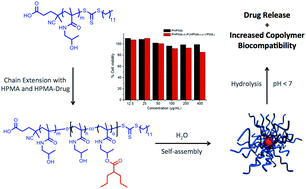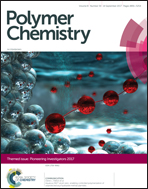Poly(N-(2-hydroxypropyl)methacrylamide)–valproic acid conjugates as block copolymer nanocarriers†
Abstract
We report nanoassemblies based on block copolymers of N-(2-hydroxypropyl)methacrylamide (HPMA) in which drug cleavage enhances the biological compatibility of the original polymer carrier by regeneration of HPMA units. Drug release via ester hydrolysis suggests this approach offers potential for stimuli-responsive drug delivery under acidic conditions.

- This article is part of the themed collection: Pioneering Investigators


 Please wait while we load your content...
Please wait while we load your content...